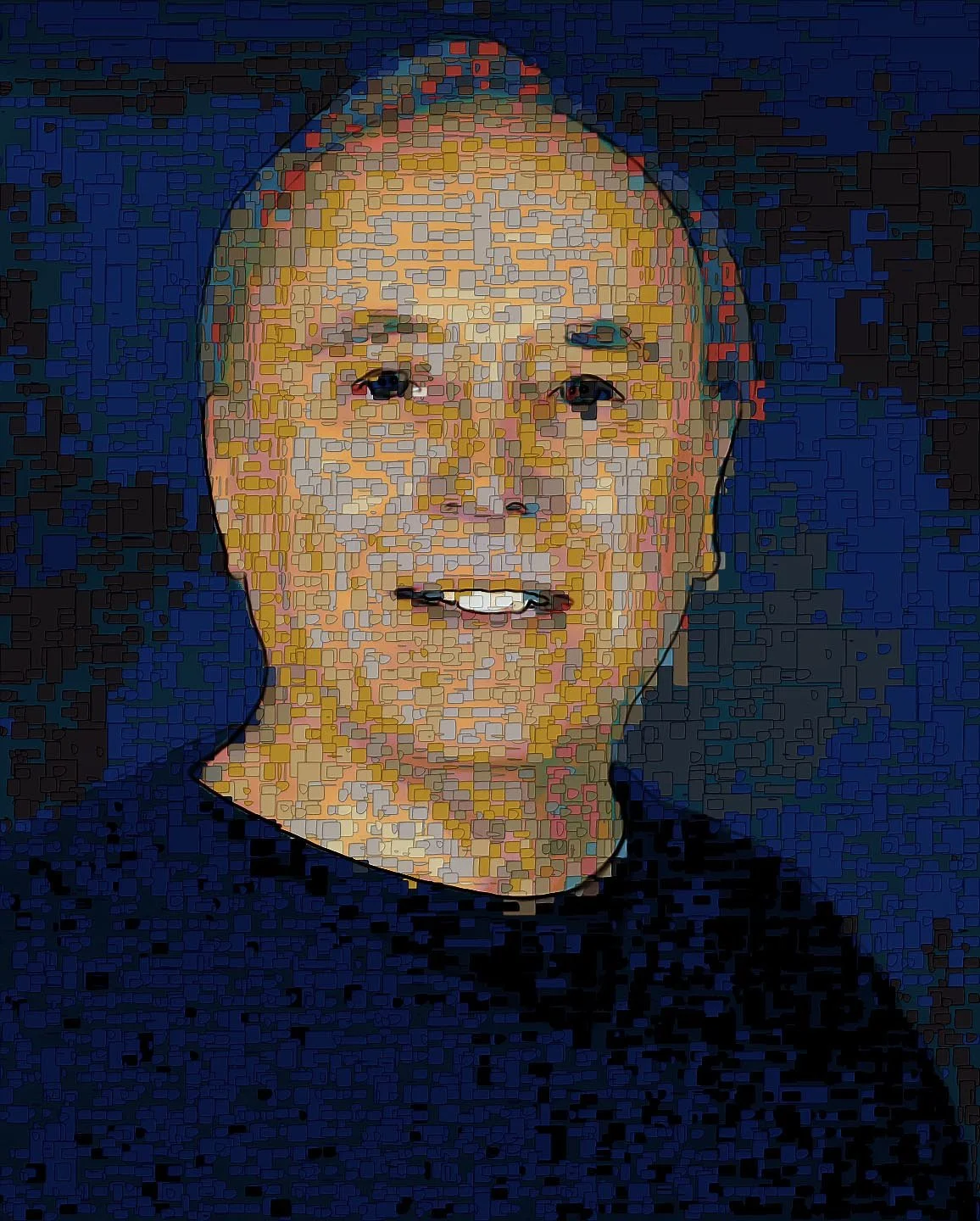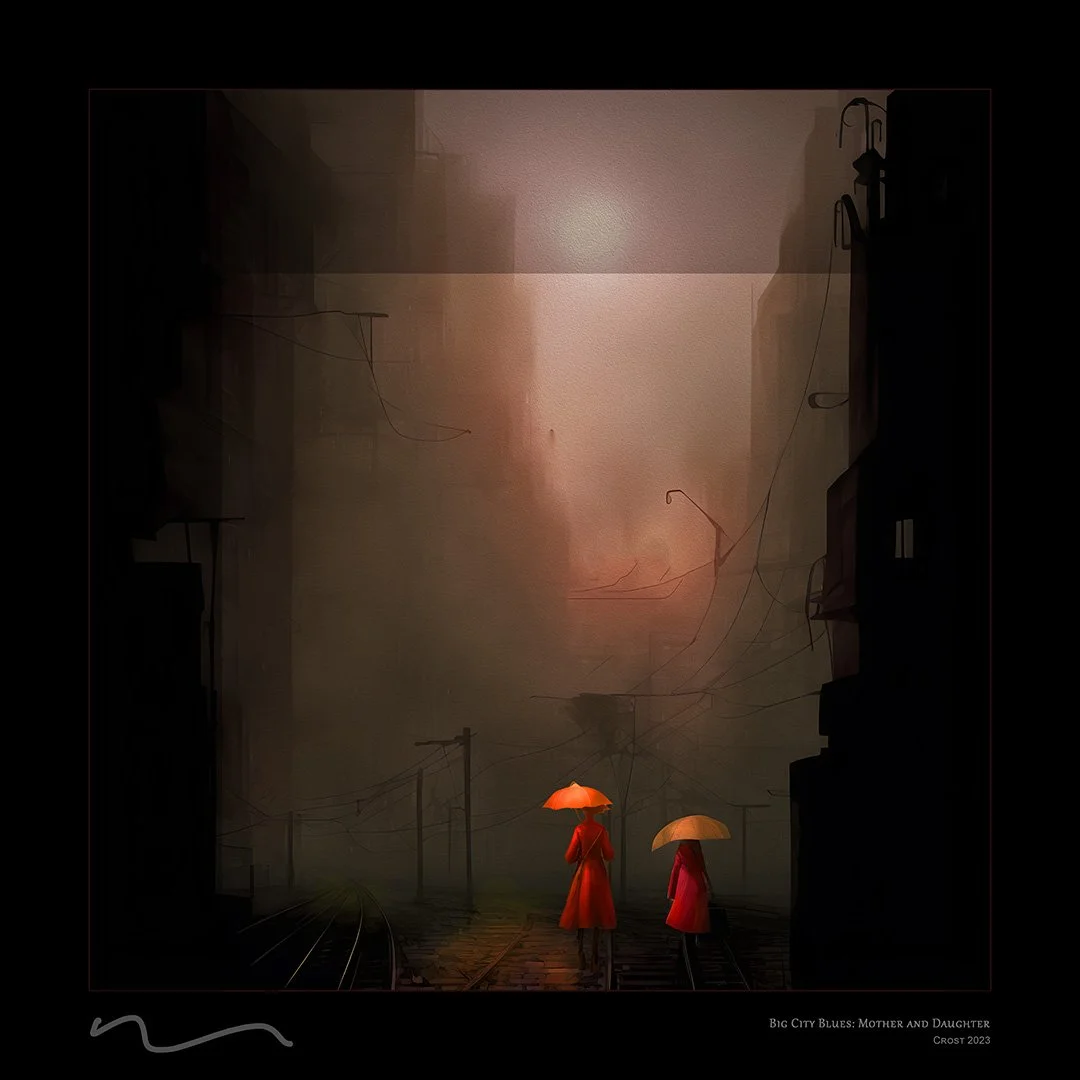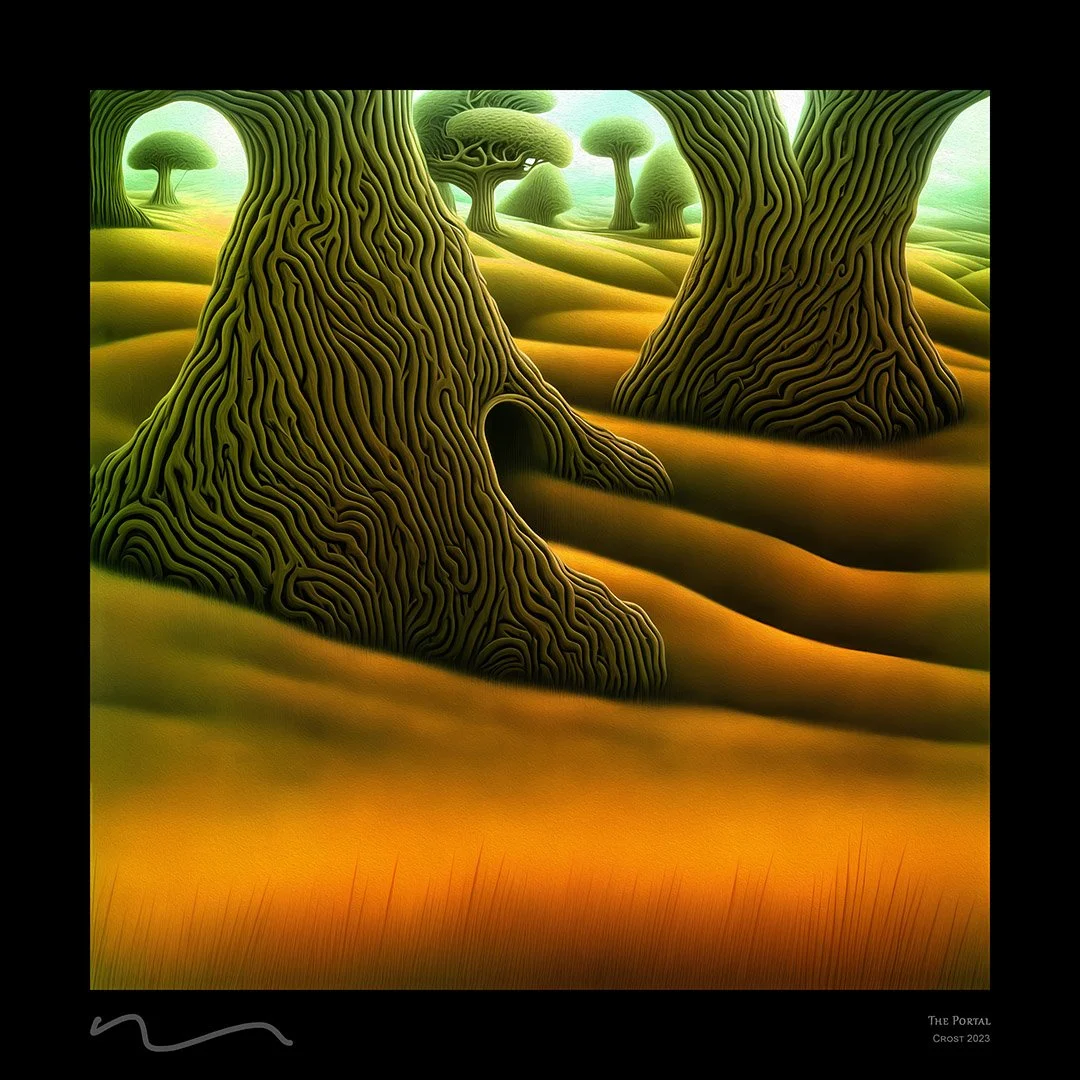A Diverting Conversation with Ken Crost
Courtesy of artist
Ken Crost is a writer, digital artist, and playwright. Kenneth studied photography at Southern Illinois University and UCLA with Photoshop gurus like Ben Wilmore and Scott Kelby. Kenneth has used his photography and digital imaging skills for companies like Oracle, J. D. Edwards, PeopleSoft, Great West Life, Health Dialog, and Vicon Motion Systems. He has designed posters, postcards, and magazine ads for galleries and theaters in Denver.
Before moving to Denver, Ken was involved in Chicago theater as an actor, producer, and director. Ken was the general manager for Pary Productions, an Off-Loop, avant-garde theatre company located at the Theatre Building. During his tenure as general manager, Ken produced 15 plays. Ken moved on to manage the North Umberland Theatrical Society, where he produced five plays and directed the critically acclaimed Chicago premiere of Extremities by William Mastrosimone. In addition to his producing activities, Ken also acted in numerous Off-Loop theatrical productions. Ken studied at Second City for two years and with Paul Sills for a year. His plays have been produced in the United States, including New York City, Buffalo, San Francisco, Chicago, Denver, and many universities.
I had the pleasure of asking Ken about his favorite part about writing plays, how he develops new ideas for plays, and so much more.
UZOMAH: How has art been something that has helped you express yourself in your writing, and has writing helped you express yourself more visually?
KEN: That’s interesting because I’ve always kept them separate, but now I am looking at ways to combine the two. This summer, we went to a memorial for my wife’s sister, who passed away last March. The memorial was at a forest preserve in the Chicago area, and as I walked alone through the trees, I had kind of an epiphany and came up with an idea to combine both my writing and art. That’s the project I’m currently working on for my website, creating a mythical story to wrap around my art. I’m getting closer to finishing that project and hope to have it on the Internet soon.
So, I think going forward, I’ll try to fit my art in with some sort of story. I like how working on my art for the Pocket Star Gallery felt like a combination of your poem with my art. It was an exciting experience.
Big City Blues: Isabela and Lily, Digital/AI Art, 2023, 36x36 inches
U: What is your favorite part about writing plays?
K: Whether I’m working on a play or novel, the process is an experience of being totally immersed in a world that seems so real in my mind. I see the characters; I hear their voices in my mind; I see how they dress, what their world looks like. It’s all so encompassing. It just takes over your life in ways that nothing else can. The characters can wake me up at three in the morning and say, “Hey, what are you doing sleeping? Let’s get to work here; we’ve got a story to tell.”
Queen Joan of Noriiland, Digital/Ai Art, 2023, 36x36 inches
U: What are the similarities between creating a play and digital art? What are the differences, if any?
K: While both artistic endeavors are extremely rewarding, writing is closest to who I am. Creating digital art is like sprinting; I have short bursts of creativity, then nothing for a while. However, with writing, the process is much more involving and takes a real commitment to a long-term project. Writing a play or novel can take months to years to complete. My play Sin took maybe ten years or so to get to a finished state. I just couldn’t solve it quickly. I’d put it away for a while and then try again.
U: How do you develop new ideas for a play and dialogue?
K: Well, currently, I’m working on a novel and have put playwriting aside, but I think the process is very similar. I basically just jump in once I have an idea and start to write. I keep a Word document open for ideas or notes that come up as I write, which can get rather lengthy. I’ll go back to it and review my notes to make sure I have everything covered. I don’t put an outline together, which seems too confining and may restrict the creative process.
The Portal, Digital/AI art2023, 36x36 inches
U: What would you change if you could rewrite a past play?
K: I do think that when something is done, it’s time to move on to the next project. When I look at my plays, I can, at times, make a tweak here and there, but I doubt I’d want to rewrite a play. It’s more fun to work on something new and see what interesting things I can discover with that project. Interacting with new characters is like nothing else I can think of. It can be so surprising when the characters basically lead you in the direction they want you to go.
The Joy Spirit Bowl, Digital art, 2021, 36x36 inches
U: As a writer, how do you help actors find the motivation and drive of the characters in the story more?
K: I really don’t strive to help the actors find motivations within the structure of my plays. But what I do try to accomplish is to write, not for the audience but for the actors. If I can truly engage them, I believe it will transfer to the audience.
Captured Eyes, Digital/AI art, 2023, 36x36 inches
U: What are some of your favorite plays and why?
K: That’s an interesting question as it relates to whether I look at it from an actor’s perspective or as an audience member. As an actor, I think the first play I was cast in, The Time of Your Life by William Saroyan, was an exhilarating experience as I was both terrified and excited at the same time—an excellent start to my acting adventure and a play that has historical value.
From an audience standpoint, that makes it a bit more difficult. Although I find that the theatre can be far more awful than good, when it is on, it can be thrilling. Right now, I’m really fond of two plays that can be streamed on The National Theatre at Home service: The Deep Blue Sea by Terence Rattigan and A View from the Bridge by Arthur Miller. Both are mesmerizing productions and are directed in ways one would not generally see on American stages. The Brits have a very different way of directing, which allows the play to breathe more.
For more information about Ken’s writing, please visit his site. For more information about his
artwork, please see here.





